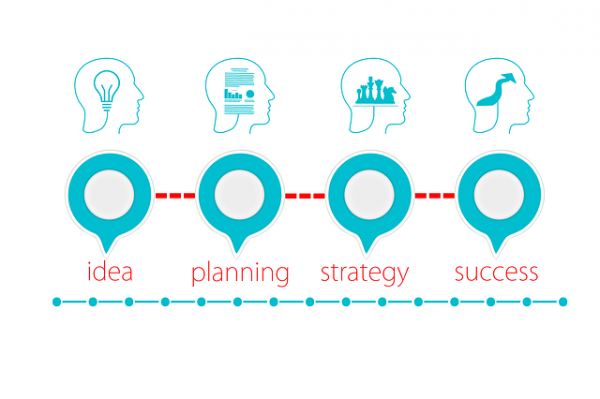Share4Rare toolkit for patient advocacy
Key questions for strategic advocacy
In order to advocate successfully, you need a foundation to work from. If you’re not sure where to start, answering the following questions will help you to lay out the framework of your advocacy and how best to reach your goals.
What are my goals?
The outcome of each advocate or group of advocates aims for depends on what their goals are. These goals can be scaled up or down according to what it is the advocate is hoping to achieve for the group they represent.

Free photo on Pixabay
Clearly identify what you are hoping to achieve from your advocacy. Your goals can include:
- Education support
- Community support
- Legislative outcomes
- Local government resource allocation
- Increased awareness
- Fundraising
- Pharmaceutical access
- Lobbying
Who could assist me?
Advocacy does not happen alone. Identify the people and other interested parties who can make your advocacy move along. This step will cover a range of figures, including those in positions of authority, political figures, pharmaceutical researchers and stakeholders, the media and patient organisations.

Photo by rawpixel on Unsplash
Research possible avenues of assistance so that you reach a clear consensus of who can be approached. Have your targets in mind and link them to how each prospective collaborator could help you get closer to them. Identify what this person needs to hear from you, and how you can get your message across.
See what each stakeholder has to gain or lose from your position; this will help you come up with the angle you need in order to get their attention. Running through a list of questions will help you narrow down the best candidates, including:
- Does this person/group have power to make changes?
- If they do not have direct influence to realise your goals, are they connected to others who do?
- Who could stand in the way?
- Which groups would benefit and which could lose out?
- What could the stakeholder be willing to put forward?
- What is their appetite for adverse outcomes?
- Could the stakeholders' involvement represent a conflict of interest?
- Have they publicly voiced their support/opposition in the past?
- If the stakeholder takes a public line via his/her company or organisation, what is the status of that company or organisation? How are they funded?
By identifying who is involved in your organisation, you can leverage your resources and time in managing them. By doing a stakeholder analysis, you identify who your stakeholders are to map their power, influence and interests to know who you should focus on. To identify and analyse the level of power and impact a stakeholder has, and manage those accordingly, you can use the Stakeholder Management tool.
What do they need to hear?

Photo by Kyle Glenn on Unsplash
A clear message about whom you are advocating for and why, why the person you are contacting is being approached, and what he/she can contribute.
Who do they need to hear it from?
The person taking your advocacy message to the recipient needs to be well-informed about his/her position, articulate and also able to tolerate pressure.
How can I make sure they hear it?
Do your research and find out what is the best place to reach someone. Face-to-face always works best, but avoid ambushing people who you are having trouble pinning down. It’s likely to put them off. Try to arrange a meeting, and if that doesn’t work, try to arrange a telephone conversation.

Free photo on Pixabay
Keeping your message short and concise without bombarding the recipient with too much information or being too vague is the best way to make sure that you get your points across. Smile and be friendly, even if the person you are meeting is someone who is standing in the way of you achieving your goals. Remember, you represent a whole patient body.
What tools do I have?
Before thinking of what tools you need, look at the resources you already have. This includes any such advocacy work that has already been done, existing connections, skills other people have which you can use and information readily available.

Free photo on Pixabay
Once you have checked your inventory of tools, you will be able to identify gaps in your resources or knowledge and where you need to add what. This also includes relationships that need building, the advantages and disadvantages you have and opportunities available.
According to the timeframe and scale of your end goal, identifying your tools will also include whether your advocacy will be a single-person effort, a group advocacy effort, independent advocacy or advocacy via a larger organisation.
What do I need?
Unless you plan on working alone, you will need:
- An advocacy manager
- Research director
- Communications manager
- Finance manager
Depending on the size and scope of your advocacy, you will also need office space or area to headquarter your efforts and receive correspondence. Alternatively, an area of your home can be dedicated to your office needs with your home address serving as your advocacy contact.
Additional resources to consider:
- Computer equipment (laptop, printer, etc)
- Smartphone
- Stationery
- A website
- Social media presence

Photo by Jeff Sheldon on Unsplash
How do I start?
The decision to advocate is the first step. After this, look at the most effective way to get going, who needs to come together for the goals to be achieved, your time-frame and budget. Having identified who you need to approach and how as well as what resources you have at hand, the next step is to formulate an action plan.

Free photo on Pixabay
Your advocacy effort will most likely be an endeavour that starts slowly and builds momentum over time - you won’t reach your goals from the word go.
To retain your focus, mark your journey to your ultimate goal with milestone goals along the way. Smaller steps in the context of your overall journey will break your endeavour down into manageable segments and ensure that you don’t lose your motivation or momentum.
There are several ways to kickstart your advocacy and create an outline of your path to success. In the resources, you can find the SWOT analysis to make an inventory of your resources and capacity, to identify opportunities and areas to work on. The Javelin Experiment Board is a template to get a better idea of your target audience, and how you can test your initial ideas. Take a look at the resources and see which tool fits!
Branding and graphic design play an important role in managing expectations for your advocacy. Even if you’re just starting out as one person, it’s important to create a corporate branding that reflects your values. Set up your brand identity and create a consistent look by using the tool Branding & Graphic Design.
How can I tell if it’s working?
Just as with any journey, patient advocacy needs a map for you to follow, and as with a real journey, checking off small landmarks along the way will help you stay motivated and operate effectively.
Monitor your progress at regular intervals by checking whether the goals you have achieved so far have had the outcomes you desired, or if the outcome has gone against what you expected. If one step along the way is creating a bottleneck or not responding in the way you had anticipated in your planning stages, re-evaluate it and replace it with a more effective strategy.
Once a goal has been achieved, the monitoring doesn’t stop there. Keep track of the progress you have ticked off your list to make sure it has stayed on track in delivering the goals you expected, and revisit achieved goals which have stopped performing in the way you had anticipated.

Free photo on Pixabay
Make your advocacy outline a document that you refer to regularly, and keep tweaking and tuning based on new insights and information you gather. In the resources, you can find several tools that can be used to monitor and evaluate your past actions and events, for example, the SWOT analysis or head over to Monitoring & Evaluation.